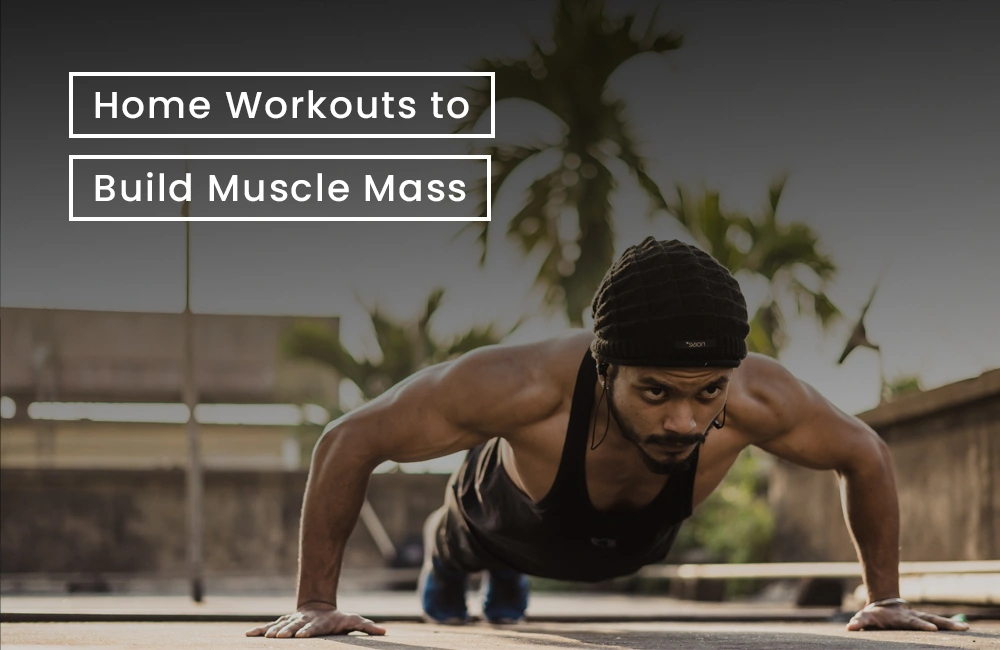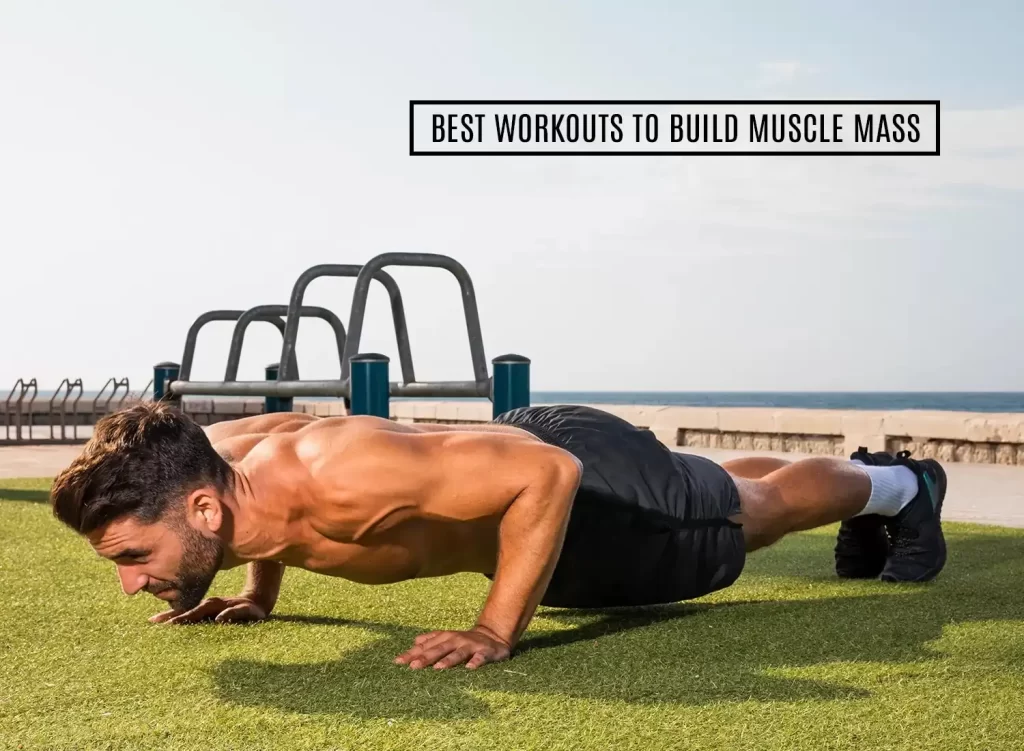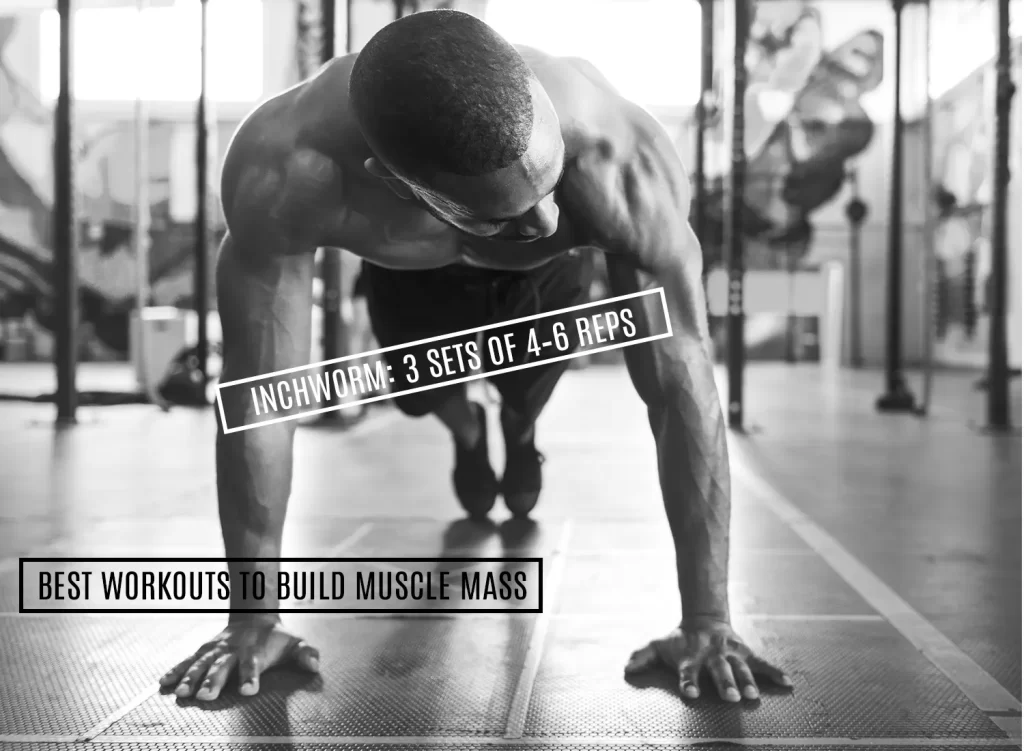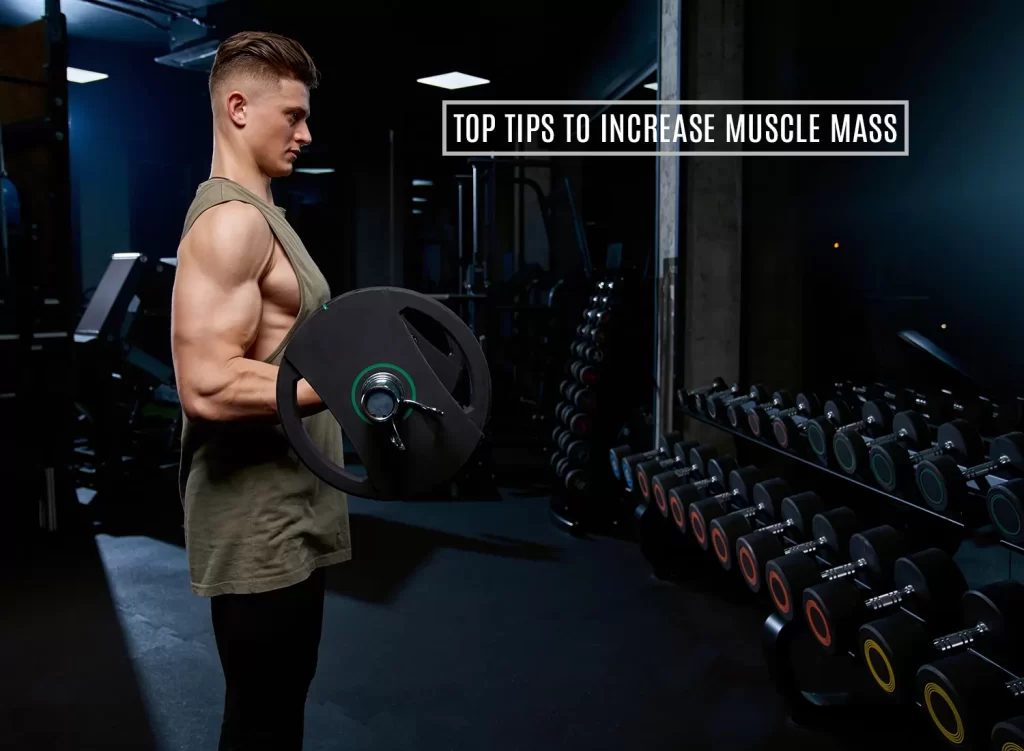Working out
Let us begin with the fundamentals: A combination of aerobic and strength training should be included in your exercise plan. Strength training may be done with hand weights or with just your body weight as resistance.
Weights will become your new best buddy as your strength increases and you need more of a challenge. However, do not forget about cardio. It is, nonetheless, an unavoidable (and sometimes harmful) component of every fitness program. Focus on high-intensity interval training (HIIT) cardio exercises a couple of times each week for the best muscle-building results.
In order to build muscle, how frequently should you work out?
An analysis of data published in 2016 found that doing strength training at least twice a week is the most effective way to increase muscle mass. As a result, begin with two or three days of full-body weight training, followed by two days of cardio and two days of recovery.
As your strength increases, you may add a fourth weight day to your schedule and experiment with alternating upper- and lower-body exercises on different days. Keep at least two days every week free to allow your body to relax and recuperate from its exertions as well. The following is an example of a possible strategy:
Workout schedule depending on fitness level
newbie
2–3 days of full-body strength training each week plus 2 days of cardio per week
novice
3–4 days of weight training per week plus 3 days of cardio per week
pro
4–5 days of weight training per week plus 3 days of cardio per week (3 days on, 1 day off)
Best workouts to build muscle mass
Chest
- Push-ups: 3–6 sets of 6–12 repetitions on each side
It is one of the most effective bodyweight workouts you can do to increase strength in your chest and triceps, and it can be performed anywhere. However, it also provides a good exercise for your shoulders, core muscles, lower back, and lower body.
Procedure: Lie facedown on the floor with your hands on the floor, slightly wider than your shoulders. Pushing up will help you elevate your shoulders, chest, and knees until your arms are completely stretched. Only your fingers and toes should be in contact with the ground. Slowly lower your body until your chest is nearly touching the floor, then repeat the process twice more.
Pro tip: The number of push-up variants is almost limitless. If you are just starting out, try wall push-ups or knee push-ups as a starting point. Do you have a sense of accomplishment? Try your hand at pike push-ups.
- Burpees: 6 per minute for a total of 15 min.
Do you need more explosive exercise? The burpee may be the ultimate bodyweight exercise mash-up, working your chest, core, arms, back, glutes, and legs all at the same time for a full-body aerobic workout that is also beneficial to your joints and muscles.
Procedure: Begin by lowering yourself into a squat and placing both hands on the floor so that they are just slightly wider than the width of your feet. Return to a plank posture by jumping your feet back. Return to the plank position by doing a push-up. Draw your legs back up into a squat, then explode up with your hands over your head in a single motion. Repeat.
3) Pull-ups: three sets of two to five repetitions
Performing your first pull-up might be frightening, particularly if you are just getting started. However, it is an excellent bodyweight workout for strengthening your shoulders, upper back, and biceps. Begin with a few reps and gradually increase the number of repetitions as your strength increases.
Procedure: Take an overhand hold on the pull-up bar, wrapping your thumbs around the bar as you draw up. Begin in a dead hang from the bar by saying “play dead.” Make use of your hands to squeeze the bar, which will help to activate the muscles in your upper body and core. Pull your chin up till it clears the bar. Return to the dead-hang posture by lowering yourself gradually. Repeat.
Advice from the experts: If you want to perform pull-ups at home, you may get a portable pull-up bar that fits in a doorframe.
Arms
- Plank-up: 3 sets of 5–10 reps
Making your arms stronger with any form of plank exercise is beneficial, but doing plank-ups is particularly beneficial for building the triceps and biceps muscles in your arms and upper body.
Procedure: Begin in plank position, with your elbows and toes on the floor, your core engaged, and your torso raised off the ground. Extend one arm at a time, maintaining your body as straight as possible, and raise yourself into the push-up position. One arm at a time, lower yourself onto your elbows. Repeat.
- Triceps dip: 2 sets of 10–12 reps
To do triceps dips, you will need a chair, a box, a ledge, a bench, or a staircase. This motion can swiftly develop your triceps (as well as your pecs! ), which are notoriously difficult to grow without concentrated training.
Procedure: Begin by taking a seat in a chair (or on a step, etc.). With both hands on each side of the hips, grab the edge of the chair and lean back. Lift your body up and out of the chair into a hovering posture beyond the edge of the chair. Extend your legs till they are almost straight. Gradually lower yourself to the floor until your elbows are nearly parallel to your shoulders, then repeat. Pushing down into your palms will help you bring your arms back up until they are straight again. Repeat.
- Inchworm: 3 sets of 4–6 reps
As ridiculous as it sounds, this bodyweight motion is (nearly) as entertaining as it is. You will feel like a young child again after doing this creepy-crawly workout, which will help you improve your triceps, shoulders, chest, abs, glutes, and quads.
Procedure: Take a step back with your knees slightly bent. Slowly reach down and touch your toes, bending your hips as you do so. Hands should be on the floor, and you should “crawl” them away from your body until you are in a plank posture. Take little, insect-sized strides forward until your feet and hands connect. Repeat.
Legs
- Step-up: 3 sets of 15 reps (each side)
Do you have a stairwell? Alternatively, how about a box? After that, you may do this leg exercise. Exercises like step-ups are a great way to develop stronger quadriceps, glutes, and hamstrings in a short amount of time. Just remember to take things one step at a time.
Procedure: Go to the stairwell of your house or, if you do not have a stairwell, position a solid box in front of you. Step up onto the box or the first step with your right foot first, then with your left foot, and so on. Reverse the process by stepping back down with your right foot, then your left. Repeat the process, swapping which leg you begin with each time.
Pro tip: When you take the second step onto the box or stair, bring your knee toward your chest to make it more challenging.
- Lunge: 3 sets of 15 reps (each side)
There are plenty of lunge variants you may try, but even the most basic lunge can help to strengthen your quadriceps and glutes. In addition, it helps to strengthen your hamstrings.
Procedure: Start from a standing posture and take a large stride forward with one leg. Reduce your body’s position toward the floor until the upper thigh of the front leg is almost parallel to the floor and the rear knee is barely above the floor (see illustration). By applying pressure to the heel of your front leg, raise yourself up. Take the huge initial step with the opposing leg and repeat the process.
- Squat: 3–5 sets of 8–12 reps
Squats are popular among weightlifters, which may lead some people to believe that they can only be performed with weights. This is incorrect. Nonetheless, squatting with your bodyweight alone may result in powerful leg muscles if performed with proper form and technique.
Procedure: Stand with your feet slightly wider than your shoulders. Extend your arms straight out in front of you, palms facing down. As you bend your knees, take a deep breath and push your hips back slightly. Maintain a straight line of vision, with your chin up, shoulders erect, and back straight. Squat as low as you are able to comfortably go, attempting to have your hips fall below your knees as much as possible. As you rise off your heels, use your core to propel you upward explosively.
See also Best Workouts to Lose Belly Fat
Top tips to increase muscle mass
Building muscle requires a positive energy balance, which means you must consume more calories than you burn in order to see results. You will require around 2,800 calories to gain one pound of muscle, mostly to sustain protein turnover, which may be increased with resistance exercise. By following these eight suggestions, you will be able to increase your muscle mass more rapidly and effectively.
In order to grow more muscle, you must consume more calories than your body can burn each week. If you consume too many additional calories in an attempt to gain more muscle, you will also accumulate excess body fat. A daily increase of 250 to 500 calories is recommended, according to our research. Maintain a focus on the lower end of the range if you have trouble gaining weight in general, and a focus on the higher end of the range if you have trouble gaining weight, in particular, It will take some trial and error to determine the optimal quantity of extra calories to consume in order to grow muscle and maintain lean body weight.
Research also shows that taking lean protein 15 to 20 minutes before, throughout, and within one hour of exercising may aid in increasing muscle mass. In light of the fact that you are unlikely to be devouring a steak or chicken breast at the gym, a protein drink or supplement may be advantageous immediately before, during, or after exercises, but it is not required.
However, protein is not the only factor to consider. You should consume several meals that match your calorific requirements while also providing you with the necessary nourishment as part of a healthy, balanced diet that will enable you to gain muscle, shed weight and become stronger. Here are eight straightforward suggestions to help you get back on track…
1. Eat breakfast to assist in the building of muscle mass
This provides you with an instant boost of energy while also allowing you to feel satisfied until your next meal or snack. It also sets the tone for the rest of the day: if you start your day with a filling and nutritious breakfast, you will be more likely to eat healthfully throughout the day. Omelets, smoothies, and cottage cheese are some of the greatest foods to consume if you are looking to gain muscle mass.
2. Have a meal every three hours.
Eating the proper foods at the right times is critical to increasing your muscle build and strength. Eating your breakfast, lunch, and supper as you normally would, interspersed with meals after your exercise, before bed, and with two snacks in between, is the quickest and most convenient method. It is possible to maintain a healthy food intake while also reducing hunger. This is because eating smaller meals more often, rather than a few large meals will reduce the size of your stomach. You will eat less and feel fuller faster, and your waistline will shrink as a result. You will also have fewer cravings as a result. When you do not eat for an extended length of time, you may find yourself overeating at your next meal or replenishing your energy reserves with unhealthy snacks from the vending machine. So, to avoid cravings, eat at regular intervals throughout the day, and your body will get hungry at those intervals as well.
3. Include protein in every meal to increase your muscle mass ratio.
Protein is required for the development and maintenance of muscle. In order to attain this, you should aim to consume at least 1 gram of protein for every 454 grams of body weight. If you weigh 91kg, it works out to 200g every day. The quickest and most convenient approach to get this quantity is to include a complete protein source with each meal. These are some examples:
- Red meat is a delicacy. Beef, hog, lamb, and other meats are available.
- Poultry. Poultry is a kind of poultry. Chicken, turkey, duck, and other poultry are examples of poultry.
- Fish is a good source of protein. Tuna, salmon, sardines, mackerel, and other types of fish are available.
- Eggs are a good source of protein. Do not accept the misconceptions about cholesterol. Consume the yolk.
- Dairy products. Milk, cheese, cottage cheese, quark, yogurt, and other dairy products
- Whey is a kind of dairy product. Although not required, this ingredient is excellent for quick post-workout smoothies.
- Also consider vegan alternatives such as lentils, tofu, seeds, and almonds.
4. Consume fruit and vegetables with each meal
The majority of them (though not all) are low in calories, allowing you to fill your stomach without accumulating fat or weight. Fruits and vegetables thereadingclinicinc.com – growth hormone are also high in vitamins, minerals, antioxidants, and fiber, which aids in digestion; nevertheless, it is important to verify the sugar level of particular fruits and vegetables before consuming them.
5. Only eat carbs after you have completed your workout.
While carbohydrates are necessary for energy, most individuals consume much more than they need. Keep your carbohydrate intake to a bare minimum after your exercise.
- Include fruits and vegetables in all of your meals. With the exception of maize, carrots, and raisins, they provide a little number of carbs when compared to whole grains.
- One more carbohydrate post-workout only. This includes grains such as rice, pasta, bread, potatoes, quinoa, oats, and so on. White carbohydrates should be avoided, and whole grains should be consumed.
6. Consume healthy fats
Because they digest slowly, healthy fats aid in weight reduction and overall wellness. Make careful to maintain a healthy fat intake balance by including healthy fats with each meal and avoiding artificial trans-fats and margarine.
7. Drink water to assist in the building of muscle mass
Strength exercise promotes water loss via sweating, which may hinder muscle repair, and as a result, it will not assist you in increasing your overall muscle mass. Drinking water not only helps to avoid dehydration, but it also helps to reduce hunger, since having an empty stomach might make you believe you are hungry.
8. 90% of the time eat whole foods
Whole foods should account for 90 percent of your caloric intake if you want to get the outcomes you want and increase your muscle growth by a substantial amount.
- Organic and natural foods. It is these foods that are as near to their original condition as possible that are unprocessed and unrefined (or just a little refined). Fresh meat, fish, poultry, eggs, vegetables, pulses, fruits, rice, oats, quinoa, and other grains are examples of such foods.
- Foods that have been processed Added sugars, trans fats, nitrates, corn syrup, salt, and other additives are common in processed foods. For instance, bagels, fruit bars, cereals, pizza, pastries, sausages, frozen meals, and nutritional supplements are all examples.
See also Kickback Workouts: Understanding the Exercise and Identifying Examples






